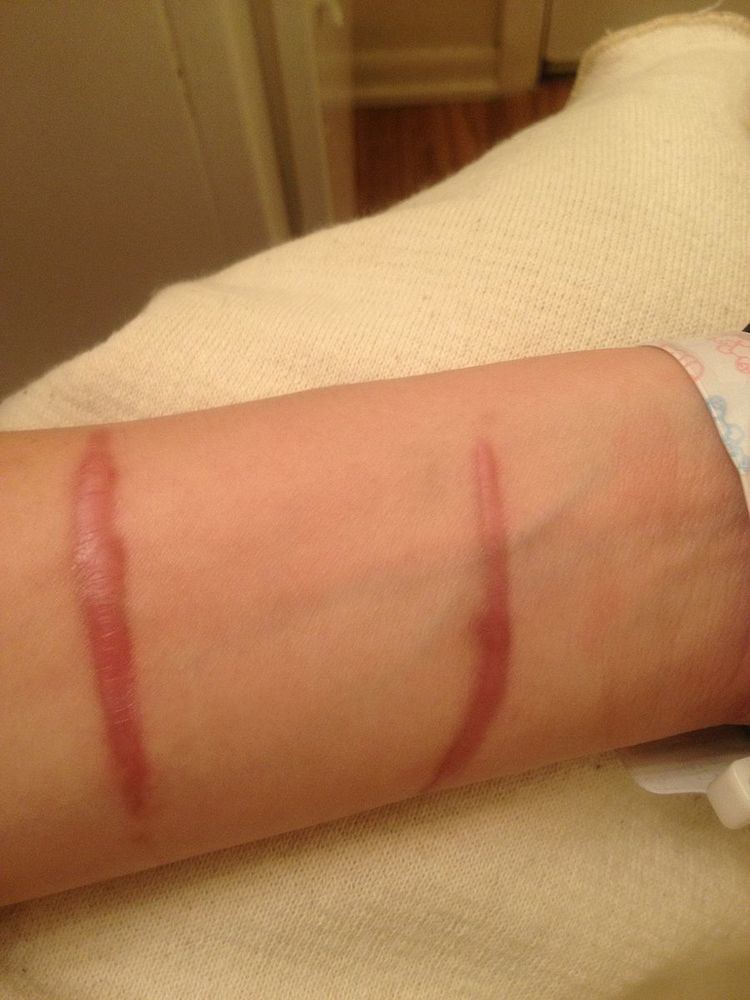 | ||
A hypertrophic scar is a cutaneous condition characterized by deposits of excessive amounts of collagen which gives rise to a raised scar, but not to the degree observed with keloids. Like keloids, they form most often at the sites of pimples, body piercings, cuts and burns. They often contain nerves and blood vessels. They generally develop after thermal or traumatic injury that involves the deep layers of the dermis and express high levels of TGF-β.
Also mechanical tension on a wound has been identified as a leading cause for hypertrophic scar formation.
When a normal wound heals, the body produces new collagen fibers at a rate which balances the breakdown of old collagen. Hypertrophic scars are red and thick and may be itchy or painful. They do not extend beyond the boundary of the original wound, but may continue to thicken for up to six months. They usually improve over one or two years, but may cause distress due to their appearance or the intensity of the itching; they can also restrict movement if they are located close to a joint.
Some people have an inherited tendency to this type of scarring, for example, those with Ehlers-Danlos syndrome Classic Type. It is not possible to completely prevent hypertrophic scars, so those with a history them should inform their doctor or surgeon if they need surgery. Scar therapies may speed up the process of change from a hypertrophic scar to a flatter, paler one.
